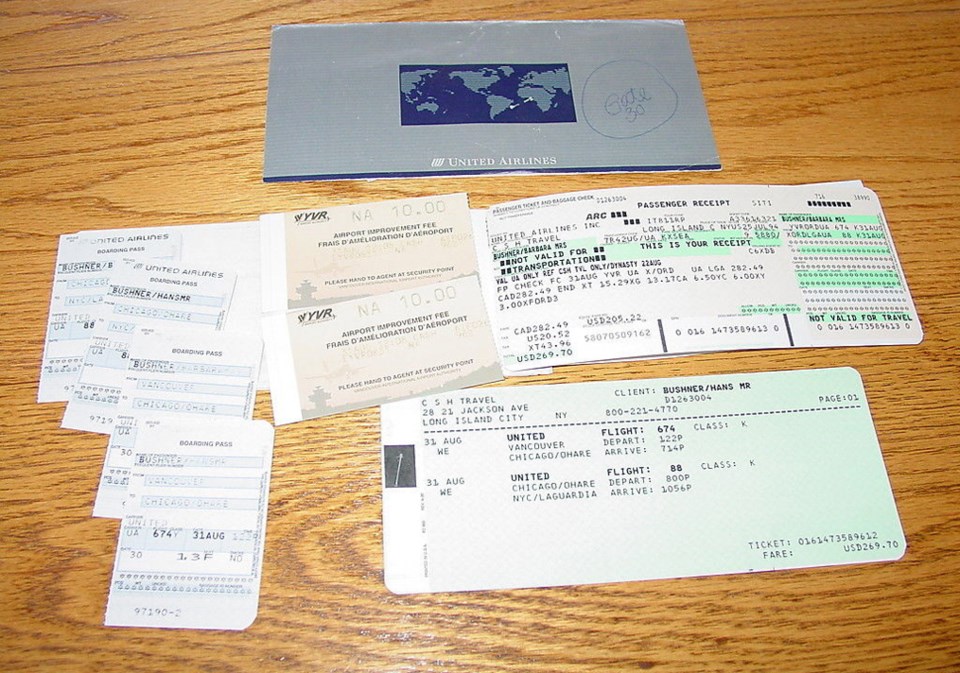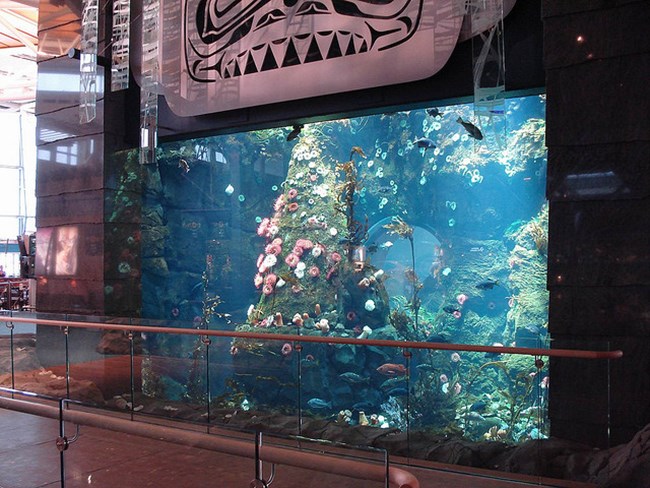Lineups are unavoidable at the airport. Travellers dutifully queue for tickets, security, boarding and baggage to earn the right to fly the friendly skies.
But one summer day in the year when Whitney Houston’s “I Will Always Love You” topped the pop charts, Vancouver International Airport professed its love for passengers by introducing a new counter to queue at: the airport improvement fee kiosk. It was here where passengers began paying a travel tax that — despite once being considered temporary — has not only persisted, but doubled in cost.
The fee arrived on July 1, 1993, a year after YVR became one of the first four airports in Canada the federal government transferred to a local not-for-profit organization we know as the Vancouver Airport Authority.
Important infrastructure was needed at Sea Island’s growing airport, said the authority, which moved ahead with plans for a 16-gate International Terminal Building, completed in 1996.
It was then Vancouver Airport Authority’s then CEO David Emerson infamously suggested the end was near for the airport improvement fee.

“We always said the fee was attached to this project, so once enough people go through the turnstiles to pay for the terminal and runway and retire the debt, then that fee is history,” said Emerson, according to a report in The Vancouver Sun. “To be on the safe side, I would estimate that to be somewhere in the neighbourhood of six years.”
The fee never went away.
One frequent traveller, Kevin Armstrong, refused to pay it. Four years after the airport authority introduced the charge, CTV News documented Armstrong’s fight. The man estimated he’d travelled through YVR 80 times without paying the fee.
“If I go into a restaurant...and you bring me the bill for the whole dinner, and me and my partner get up to leave, then you come up to me and say, ‘By the way, you have to pay $10 to use the table and utensils.’ That’s the analogy. How would you feel if that happened?” he said.
Armstrong argued if the airport needed more money, it should get it from the airlines, and the airlines can in turn get it from him.
“If Canadians don’t want to be paying $40 or $50 every time they use an airport five years from now, they better stand up right now and say enough is enough.”
The user fee hasn’t reached those heights, but it has doubled. Today, passengers travelling outside B.C. pay $20. Those travelling within B.C. and Yukon pay $5. Connecting passengers don’t pay the toll.
Besides helping fund the international terminal and a runway, it’s been used to fund half the cost of numerous other projects, including the Sea Island section of the Canada Line and a 114,000-litre aquarium as part of an international terminal building expansion.
Fee funds are now being applied to a $1.8-billion plan that includes new high-speed baggage systems and upgrades to original areas of the 1968 domestic terminal.
The airport authority maintains the fee is needed in perpetuity because government doesn’t contribute to airport operations or building projects. Craig Richmond, the authority’s CEO, told the Richmond News YVR needs airfield and terminal infrastructure to “continue to build YVR as a world-class, sustainable gateway between Asia and the Americas.”
“The airport improvement fee is an established user-pay mechanism that allows us to invest in ongoing projects that will ultimately create new jobs, increase access to global destinations and open more markets for B.C. goods,” he said in an e-mail.
Although most travellers have now become accustomed to paying the fee — especially since it’s now included in the cost of a ticket — it still tastes sour to Bruce Cran, president of the Consumers’ Association of Canada.
“I think it’s absolutely outrageous,” he said in an interview. “If it’s a gateway, why don’t they get the federal government to make these contributions? It certainly shouldn’t be on the backs of the flying public that live in Vancouver.”
Although most major Canadian airports now charge an airport improvement fee —many are even more expensive than YVR’s $20 — an airport just south of Richmond does not. Bellingham’s “utilitarian” airport is what travellers want, said Cran.
“Things like aquariums and some of the other stuff (YVR has) is not what we require and we don’t want to pay for it. But we are. We’re forced to.”



